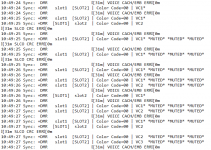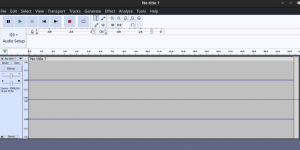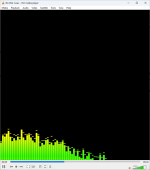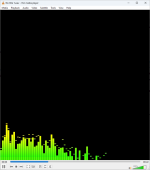I've done a fair amount of testing, mainly on P25 and DMR. In my experience, on my local systems, it seems to me that DMR likes ~40% - ~50%. P25 seems to like ~50% - ~75%. YMMV. I've found that changing bandwidth will change the "In Level". Just a side note; I've found that signal strength has very little effect on "In Level".Quick question regarding the In Level percentage... is there an optimal value you should be shooting for there? 100%?
You are using an out of date browser. It may not display this or other websites correctly.
You should upgrade or use an alternative browser.
You should upgrade or use an alternative browser.
DSD FME
- Thread starter lwvmobile
- Start date
Is there an example of the blacklist/whitelist files somewhere? They seem to be eluding me otherwise.....
lwvmobile
DSD-FME
Does anyone have a sample frequency_map for a p25 system or do I even need one if I have the cc I'm a little confused.
Its not required for P25, it'll pull the IDEN values and calculate frequencies for channels as they come in. Same for any NXDN DFA or DMR T3 with absolute channel assignments, otherwise, you need a channel map.
Just look at the group.csv file in the example folder, the A or B option next to the name is the Allow or Block for that group.Is there an example of the blacklist/whitelist files somewhere? They seem to be eluding me otherwise.....
jcardani
Member
Hi, I have a good friend that would like to use DSD FME in his setup. He uses an ICOM R8600 which is connected to his Win 10 laptop running SDR Console. SDR Console feeds audio through VB Cable to DSD Plus (since the R8600 does not have a discriminator output). Can DSD FME also use the audio routed through VB cable like DSD Plus can? If so what command line arguments would need to be changed? Thanks!
Hi, I have a good friend that would like to use DSD FME in his setup. He uses an ICOM R8600 which is connected to his Win 10 laptop running SDR Console. SDR Console feeds audio through VB Cable to DSD Plus (since the R8600 does not have a discriminator output). Can DSD FME also use the audio routed through VB cable like DSD Plus can? If so what command line arguments would need to be changed? Thanks!
The easiest way is to make VB Cable default recording device in Windows then run DSD-FME without -i
jcardani
Member
Thanks LimaZulu! That was it. Instead of trying to force it to use the vb cable audio which was device #2, he changed the audio input to default to the vb cable, removed the -i and all is good.
Is there any way to put recordings into different folders when using multiple decoders at once?
I have a faint memory in my head that I had such a setup in the past but was not able to remember how I did it. Placing the desired folder after -P switch in my bat file does not help.
I have a faint memory in my head that I had such a setup in the past but was not able to remember how I did it. Placing the desired folder after -P switch in my bat file does not help.
lwvmobile
DSD-FME
Not currently. I had just decided a while back to hard code it to use a standard folder named WAV for those, and to create a folder in the running directory named WAV if it didn't exist. I can probably add an option to use custom folder names per instance, I'll look at putting it on the TODO list.Is there any way to put recordings into different folders when using multiple decoders at once?
I have a faint memory in my head that I had such a setup in the past but was not able to remember how I did it. Placing the desired folder after -P switch in my bat file does not help.
lwvmobile
DSD-FME
I'd be more willing the guess that the signal polarity is inverted. Use the -xr option.
Thanks Iwvmobile, the LimaZulu option didn't work for me, I find it curious to see when I try to extract the amb files it tells me that the supposed frames of the beacon signal contain voice. I am sending you a wav of the signal, I cannot make a more "adjusted" recording since this recording is not mine.
 bit.ly
bit.ly
No title 1.wav
 bit.ly
bit.ly
lwvmobile
DSD-FME
BM82557
Member
lwvmobile
DSD-FME
Yes, on second review, this does appear to have some audio in it. I am willing to assume its probably SDR# IF Recorder file. Such a pain. You probably don't want my honest opinion on that particular format, but lets just say its always given me issues in the past when sent samples of it. Anyways, I was able to decode the file after inverting the polarity expected from DMR. But the unusual thing is, I think the signal in the IF recording flips polarity half way through or something unusual. When the 'voice' sections you dispalyed earlier before, those are just repeats of the XPT Site Status beaconing out, then it goes to a TermLC Call handshake setup, then goes back to beaconing, but the signal is inverted at that point. Doesn't appear to have any actual voice in it.
The signal is recorded with these characteristics, as I told you before it is not mine and I cannot re-record it with other different characteristics.
PCM waveform wav 39062 Hz Stereo, 16 bit
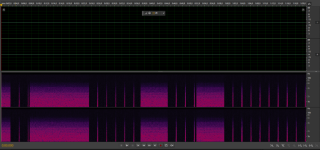
I'm sending you another copy of the uncut signal.
 bit.ly
bit.ly
PCM waveform wav 39062 Hz Stereo, 16 bit

I'm sending you another copy of the uncut signal.
No title.wav
 bit.ly
bit.ly
jimlawrence
Member
- Joined
- Apr 17, 2004
- Messages
- 286
Using sdr++ and dsd fme with ncurses to monitor a conventional DMR system.
My start-up command: dsd-fme.exe -fs -i tcp:127.0.0.1:7355 -U 4532 -N 2> log.ans
At times, I only want to listen to timeslot 2. I have discovered if I press the "1" key when timeslot 1 is carrying audio, timeslot 1 will be muted. Later, if I want to listen to timeslots 1 and 2 again, how do I unmute timeslot 1? Pressing the "1" key seems to unmute timeslot 1 briefly, but it always reverts to muted again when timeslot 1 becomes inactive or after a few seconds of audio.
Has anyone else experienced something like this? I'd like to know what I'm doing wrong.
dsd fme really works great for DMR. Great job all around!! Definitely my favorite way to listen to DMR!! Thank you!
My start-up command: dsd-fme.exe -fs -i tcp:127.0.0.1:7355 -U 4532 -N 2> log.ans
At times, I only want to listen to timeslot 2. I have discovered if I press the "1" key when timeslot 1 is carrying audio, timeslot 1 will be muted. Later, if I want to listen to timeslots 1 and 2 again, how do I unmute timeslot 1? Pressing the "1" key seems to unmute timeslot 1 briefly, but it always reverts to muted again when timeslot 1 becomes inactive or after a few seconds of audio.
Has anyone else experienced something like this? I'd like to know what I'm doing wrong.
dsd fme really works great for DMR. Great job all around!! Definitely my favorite way to listen to DMR!! Thank you!
lwvmobile
DSD-FME
Glad to hear you are enjoying using dsd-fme, even with its flaws and everything else.dsd fme really works great for DMR. Great job all around!! Definitely my favorite way to listen to DMR!! Thank you!
Yep, that looks good to me. You've made it further along than a lot of others have. Congratulations on your reading comprehension skills lol.Using sdr++ and dsd fme with ncurses to monitor a conventional DMR system.
My start-up command: dsd-fme.exe -fs -i tcp:127.0.0.1:7355 -U 4532 -N 2> log.ans
At times, I only want to listen to timeslot 2. I have discovered if I press the "1" key when timeslot 1 is carrying audio, timeslot 1 will be muted. Later, if I want to listen to timeslots 1 and 2 again, how do I unmute timeslot 1? Pressing the "1" key seems to unmute timeslot 1 briefly, but it always reverts to muted again when timeslot 1 becomes inactive or after a few seconds of audio.
Has anyone else experienced something like this? I'd like to know what I'm doing wrong.
Okay, so, what is really happening when you hit 1, is that you are locking out the talkgroup or private target in slot 1, (or in the case of fdma only systems, just what is currently playing) If you hit the 2 key, it locks out the TG in slot 2. If you don't have a group.csv file specified, then its just temporary for that session. If you use -G group.csv option, then it'll write the lockout into that file and block that TG in that csv file. This is primarily used to prevent tuning to them in trunking systems, but it will also silence that TG, since in TDMA systems, even if you prevent tuning to that group, that TG can still occur in a timeslot opposite from the one you tuned to for another TG. I hope that makes sense. I don't have a mechanism currently for only synthesizing voice in slot 1 or voice in slot 2. There is a 'preference' for when dual voice is present, where you can use -z 1 or -z 2 to prefer timeslot 1 or timeslot 2 (or in the case of Phase 2, the even or odd VCH that isn't a SACCH). The default is 1, so it'll always mute slot 2 (in Windows and OSS(No Pulse) option). Optionally, you can use the bat files to start the pulse audio server in the background and use the -o pulse option, and it will synthesize both slots simultaneously. In a future release, I think I can make OSS also work in a stereo configuration, but only if it is an output and not an input. (which would work with the TCP or RTL input methods, but not disc tap)
Anyways, enough of the technical speil, if you want to see a full list of keyboard shortcuts, here is a current list. I think its up-to-date.
dsd-fme/examples/Example_Usage.md at v2.1b · lwvmobile/dsd-fme
Digital Speech Decoder - Florida Man Edition. Contribute to lwvmobile/dsd-fme development by creating an account on GitHub.
Similar threads
- Replies
- 10
- Views
- 1K
- Replies
- 1
- Views
- 545
- Replies
- 10
- Views
- 781
- Replies
- 22
- Views
- 2K
- Replies
- 3
- Views
- 896


